Max & Murphy Podcast: Assemblymember Latrice Walker
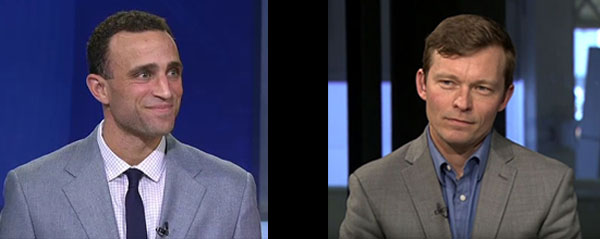
Ben Max, left, of Gotham Gazette, and Jarrett Murphy, right, of City Limits
This is part of AGENDA 2019, a joint Gotham Gazette-City Limits project
Find the rest of the series here
November 14, 2018 - Max & Murphy Podcast: Bail Reform with Assemblymember Latrice Walker
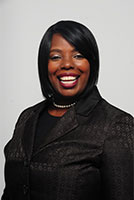 Assemblymember Latrice Walker, a Brooklyn Democrat, joined the show to discuss her push for criminal justice reform, among other issues, including the prospects for a wave of Democratic legislation to pass through the state Legislature in 2019 after the state Senate flipped and will potentially work with the long-standing Assembly majority to pass long-stalled bills.
Assemblymember Latrice Walker, a Brooklyn Democrat, joined the show to discuss her push for criminal justice reform, among other issues, including the prospects for a wave of Democratic legislation to pass through the state Legislature in 2019 after the state Senate flipped and will potentially work with the long-standing Assembly majority to pass long-stalled bills.
Listen to the conversation and let us know what you think -- we're on Twitter @TweetBenMax and @JarrettMurphy. You can listen to the show through the embedded audio below or download the episode wherever you get your podcasts, under "Max & Murphy," and listen to Max & Murphy live on Wednesdays at 5 p.m. on WBAI radio, 99.5FM or wbai.org
This is part of AGENDA 2019, a joint Gotham Gazette-City Limits project
Find the rest of the series here
***
by Ben Max, Gotham Gazette
@tweetBenMax @GothamGazette
With Full Democratic Control, Sponsors of New York Single-Payer Health Care Hopeful About 2019
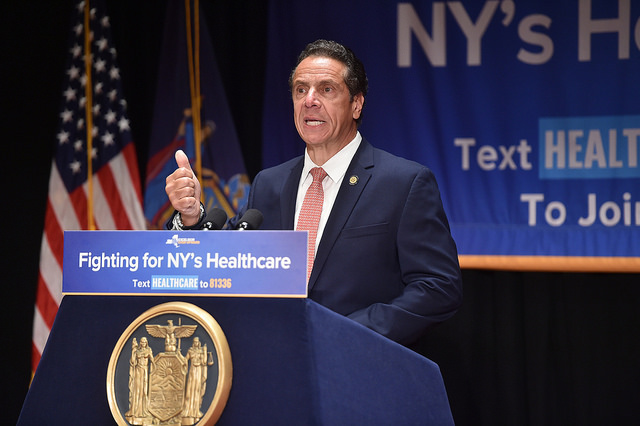
Gov. Cuomo (photo: Kevin Coughlin/Governor's Office)
This is part of AGENDA 2019, a joint Gotham Gazette-City Limits project
Find the rest of the series here
Though Governor Andrew Cuomo has not expressed support for instituting a single-payer health care system in New York, his fellow Democrats campaigned on the issue as they flipped control of the state Senate, landing all of state government into Democratic hands and providing a significant boost of optimism to the lead sponsors of the New York Health Act, which would create a government-administered single-payer health care system.
The bill has passed the Democrat-dominated state Assembly several times and all the members of Senate Democratic conference signed on as co-sponsors at the end of last legislative session in a unified show of support for the program heading into the election season.
Cuomo has said he supports a Medicare for all-type system at the federal level, but cast doubts on the cost and complexity of doing it in New York, and since their resounding wins on Election Day, the incoming leaders of the Democratic Senate majority have indicated that the massive undertaking of single-payer is not at the top of the agenda.
Still, with Democratic control of the Senate and the Assembly by wide margins, single-payer healthcare could be passed as early as the 2019 session, according to Assemblymember Richard Gottfried, chair of the Assembly Health Committee and lead sponsor of the New York Health Act.
“It was clear in the country and New York that healthcare was the number one issue on voters’ minds,” Gottfried said, before pointing to his legislation. “A solid majority of the new state Senate has either been a cosigner, voted for it in the Assembly, or campaigned on it. So I think we’re on track to get it passed in the Assembly and state Senate.”
The New York Health Act would replace health insurance companies with New York state government as the payer of healthcare costs for all New Yorkers. It has been passed in the Assembly four years running but has yet to be voted on in the Senate, where Republicans have held control. All of the other 30 Democratic senators joined lead sponsor Senator Gustavo Rivera of the Bronx to co-sponsor the legislation, though the Senate Democratic conference is seeing significant turnover due to primary wins by insurgent challengers. But, those challengers have in general been even more vocally supportive of single-payer health care than their more moderate predecessors. These facts give Gottfried confidence that the New York Health Act will pass during the 2019 session, which begins in January.
But the bill still faces an uphill battle, in part because of the massive changes it would institute, and the fact that though it might reduce overall individual and business healthcare costs after implementation, for the state to run the system it would require raising taxes significantly, something many Democrats have promised not to do and Cuomo is vehemently opposed to. It would also drastically impact the state’s private and public hospitals, the health insurance industry, and more. Some of the changes would of course be beneficial to New Yorkers, but the undertaking is complex and the New York Health Act as currently written leaves a lot of detail undetermined, including funding.
The governor has repeatedly opposed single-payer healthcare at the state level, suggesting that it would be more rational and financially feasible if administered by the federal government. Cuomo questioned in the past how a single-payer system could be put in place without doubling the tax burden, and cited California’s and Vermont’s debates over single-payer — which both ended when supporters were not able to answer one question: where would the funding come from? — as paragons of the impracticality of state-level single-payer.
Gottfried, a Manhattan Democrat, is confident that with his fellow lead sponsor Senator Rivera, who is likely to be the Senate health committee chair come January, and other legislators, he will be able to sway Cuomo to support the legislation.
“He’s obviously not on board yet, but he and his staff are very open to working with the Legislature on the issue,” Gottfried said. “I’m convinced we can satisfy their concerns.”
And after a recent study by RAND Corporation concluded that the New York Health Act would result in a reduction of administrative costs, provide all New Yorkers with healthcare, and reduce healthcare costs for most, Gottfried says the financing of the bill will not be a problem.
“New Yorkers are all going to have to think about what they will do with the hundreds of thousands of dollars that will end up in their pockets, and that’s a nice problem to have,” Gottfried said.
The study has a caveat, however, stating in its conclusion that “the estimated effects depend heavily on the assumptions about provider payments, administrative costs and drug prices.” Politico highlighted these assumptions as well as the likely tax increases that have largely been brushed aside by Democrats supporting the legislation. Wealthy people leaving the state, companies restructuring, the cost of hospital expenses rising at a faster rate or the Trump administration not issuing a federal waiver to redirect all healthcare-related funds to the new state entity are all possible events that could result in RAND’s conclusion falling apart.
For it to work, while health care costs drop, taxes would undoubtedly increase significantly for many New Yorkers. As cited by Politico, “a household reporting $150,000 in income would see its state tax rate increase from 6.45 percent in 2017 to 18.3 percent,” under one model scenario. Additionally, those who receive Medicaid or fall under the state’s Essential Plan, which subsidizes health insurance for low-income New Yorkers, have less to gain from the expansion. According to RAND, though, 1.2 million New Yorkers would gain health coverage.
It is likely that funds for New York single-payer health care would partially come from a new payroll tax, which RAND projects to fall largely on employers. However, RAND suggests the health act payroll tax would cost less for businesses already contributing toward employee health insurance and the Medicare payroll tax, estimating decreases in employer costs fairly quickly.
Concerns about businesses and high-income individuals leaving the state persist, with a tax atmosphere in New York that many, including Cuomo, acknowledge is already burdensome and became more so for many taxpayers, especially top earners, under the new federal tax code.
Senator Rivera, aware that cost is the primary argument against single-payer health care, repeatedly emphasized the need to work towards a version of the bill that would reduce the financial strain.
“I will continue working diligently with Assembly Member Gottfried, Senate Majority Leader Stewart-Cousins and the Senate Democratic Conference to make the New York Health Act a bill that is not only fiscally responsible, but that provides comprehensive coverage to all New Yorkers,” Rivera wrote in an email to Gotham Gazette.
The bill and its potential ramifications have been studied closely by Bill Hammond, director of health policy at The Empire Center, a think tank. "Regardless of which party controls the state Senate, the New York Health Act remains a wildly unrealistic idea," Hammond said by email. "It means putting New York's entire health-care system — representing one-fifth of the economy — in the hands of the same state government that struggles to run the subways. It requires massive, draconian tax hikes, enough to roughly triple total state revenues."
"Plus, a true single-payer plan would need federal waivers that the Trump administration has vowed to block," Hammond continued, also noting a political angle -- that if Democrats spend great sums of money and political capital on a health care overhaul of this magnitude, what will they ignore, like fighting climate change or improving mass transit.
"It was easy to cast a symbolic yes vote for a single-payer bill that had no chance of passing," Hammond said. "Now that that it might actually happen, supporters are going to be forced to confront the practical realities. Then, hopefully, they’ll focus on helping the 6% of New Yorkers who still lack insurance, rather than disrupting coverage for those who already have it."
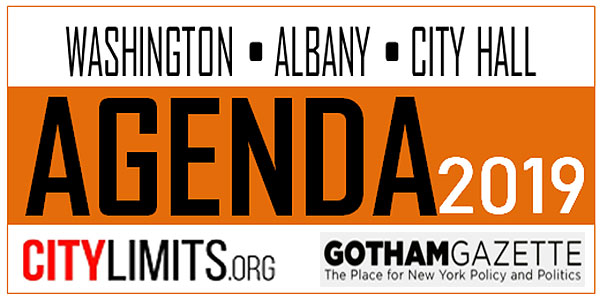 Rivera acknowledged that moving to single-payer would not satisfy everyone, especially those who benefit from the current system, and that there are negotiations to come that will likely adjust the bill to make it more palatable to holdouts.
Rivera acknowledged that moving to single-payer would not satisfy everyone, especially those who benefit from the current system, and that there are negotiations to come that will likely adjust the bill to make it more palatable to holdouts.
“The biggest challenge will be to reach a consensus among stakeholders that the NY Health Act is feasible [and] fiscally responsible,” Rivera wrote.
Citing “healthcare practitioners, prescription drug companies, healthcare providers, employers, unions and New Yorkers,” as the various groups involved, Rivera also mentioned courting Cuomo as an important step to take in the coming legislative session.
“Our main priority for the next legislative session is to continue shaping the bill so that it is feasible, affordable, that the Governor is willing to sign, and that primarily, provides quality healthcare for everybody,” Rivera wrote. “During the next legislative session, we will focus on making the necessary amendments to the bill so that it truly reflects the different healthcare needs affecting all New Yorkers.”
For now, it is very difficult to imagine Cuomo coming on board, especially given the pains he’s taken to keep state spending increases at around 2 percent per year and to lower taxes. Asked about single-payer health care during a Thursday appearance on The Capitol Pressroom with host Susan Arbetter, Cuomo painted it as unrealistic given budget constraints. He said Democrats are generally in agreement on the concept, but legislators will have to deal with reality in working with him on a state budget next year, while he also said he thinks it's much more workable on the federal level. “Single-payer health plan, for example," Cuomo said, "conceptually I think it’s the right way to go in. I believe it’s more feasible financially on the national level. No state has been able to finance the transition costs.”
A variety of factors, including the challenge of getting Cuomo’s support and not wanting to come into power quickly pursuing something as revolutionary as single-payer health care, may be why the likely next Senate majority leader, Andrea Stewart-Cousins, and her likely deputy, Senator Michael Gianaris, have not highlighted it as top priorities for the coming session.
Assemblymember Gottfried noted that state Senators’ public approval of the bill gives him no reason not to “take them at their word,” and said he expects the legislation to move through the Legislature. He knows that private health insurers are certain to vehemently oppose the continued push.
“The insurance industry will be fiercely lobbying against the bill and they have a lot of money, going up against their lobbying will take a lot of work,” Gottfried said. “but I’m convinced with so many senators on the record in support of the bill, we will prevail.”
This is part of AGENDA 2019, a joint Gotham Gazette-City Limits project
Find the rest of the series here
***
by Victor Porcelli, Gotham Gazette
@GothamGazette
This article has been updated with Cuomo's comments from 11/15/18 on The Capitol Pressroom.
More Formerly Incarcerated New Yorkers Were Able to Vote This Year, But Barriers Remain
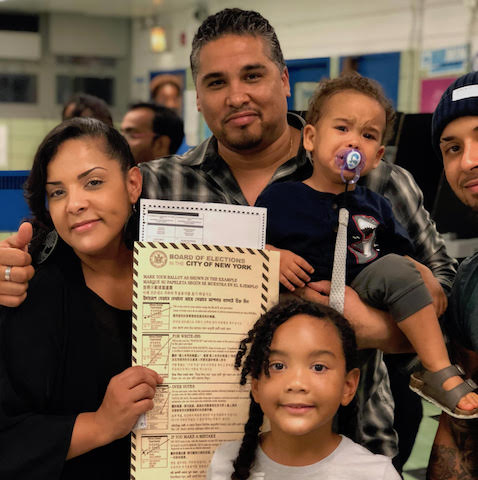
Lymus Rivera and family (photo: Beatrix Lockwood)
This is part of AGENDA 2019, a joint Gotham Gazette-City Limits project
Find the rest of the series here
Advocates say misinformation and lack of education can suppress votes
Lymus Rivera brought his whole family to the polls on Election Day. His wife and daughter were there, and his son even brought his grandson along. They took pictures and stood proudly alongside him as he cast his ballot.
“It was a celebration,” Rivera said. “When I think about voting, I think about redemption. I think about being a part of society where I was once part of the problem.”
Rivera was one of the roughly 35,000 people re-enfranchised by Governor Andrew Cuomo as part of an April executive order granting voter restoration pardons to people on parole.
The move was celebrated by criminal justice reform advocates as a step toward equal constitutional rights for all citizens. Still, significant barriers stand in the way of the ballot box for formerly incarcerated people. Out of the tens of thousands of people granted voting pardons by Cuomo, only an estimated 1,000 had registered by early October, according to data compiled by the Brennan Center for Justice and presented at a City Council hearing.
That small number points to “miseducation and misinformation,” said Isabel Zeitz-Moskin of the National Action Network at an October City Council hearing, “not a lack of interest among justice-involved people.”
“People still don’t believe that they have the right to vote as a justice-involved individual,” Zeitz-Moskin said. “And it is no wonder they have this skepticism with the amount of misinformation that is originating from the state itself.”
New York law, which allows people who are on probation to vote, but not people who are on parole. The executive order restored the voting rights to people who are on parole, meaning they have been released from prison before their sentence is finished, on certain conditions. The executive order was not a change to the law, but created a process in which people on parole could apply for “voter restoration pardons” from the governor’s office.
Six months after Cuomo signed his executive order, the New York City Campaign Finance Board website and its voter guide failed to include information about the voter restoration pardons. The CFB did not update its materials until late October, just days before New Yorkers headed to the polls.
Advocates like Zeitz-Moskin say mistakes like this are sometimes the result of confusion among BOE employees. On multiple occasions, she and people she knew were told by Board of Elections employees that in order to register, people on parole needed to turn in their pardons along with registration forms, despite the fact that this was not BOE policy. New York law, which allows people who are on probation to vote, but not people who are on parole, also leads to confusion among BOE staff, many of whom are not well-versed in criminal justice terminology and fail to differentiate between the two.
Although the office has granted thousands of pardons, voter enfranchisement for this population has not been codified in state law. Confusion remains among formerly incarcerated people, many of whom fear violating the terms of their parole, or simply do not know they are eligible to vote.
“Some people on parole are distrusting of the system that incarcerated them and do not want to engage with it,” said Nick Encalada-Malinowski, the Civil Rights Campaign Director at Vocal New York. “And some people think that if they have a felony conviction they are not eligible.”
“There is very little effort by the government to actually ensure that people are re-enfranchised,” Encalada-Malinowski said. “This is why people should never lose the right to vote to begin with.” He said that his organization had heard from poll workers that some people on parole showed up to vote on Tuesday, not realizing that they had to be registered. “They heard from the news that people on parole could vote, and showed up, only to be denied.”
“These are people who never voted in their life,” said Vidal Guzman, a Community Organizer at JustLeadership USA. “You just give them a ballot and they don't know what's next.”
“There’s a lot of people who don’t vote because of the fear of being embarrassed and not knowing how to vote,” he said. “And they don’t believe they can make a difference in their communities.”
Howard Harris, who works for the Fortune Society’s Alternatives to Incarceration Program, says he doesn’t think the information about voter pardons is being disseminated to people just coming out of prison. “I have had a couple of clients who didn’t realize that they had the opportunity to vote.”
Harris, who himself was re-enfranchised by Cuomo’s executive order, said he was “mesmerized” by the experience of voting for the first time in the New York primary.
Harris said that during his first two years home from prison, he was angered by the fact that he had to pay taxes but wasn’t able to vote. “It was discouraging to think I’ve served my time for the crime that I’ve committed and now I’m not even allowed to do my civic duty.”
“There are 36,000 parolees in New York state who have the opportunity to vote now,” he said. “That’s a little voting bloc. That could change the course of an election and I want to be a part of that.”
 According to the Sentencing Project, two percent of black New Yorkers are disenfranchised by New York State law, a population that could, conceivably, swing a local election.
According to the Sentencing Project, two percent of black New Yorkers are disenfranchised by New York State law, a population that could, conceivably, swing a local election.
For that reason, some on the other side of the aisle saw Cuomo’s executive order as a cynical move in an election year. Some Republicans even argued that that the move endangered public safety by granting “secretive pardons to cop killers, sex offenders, and violent felons.”
Cuomo’s Republican opponent Marc Molinaro seized on the governor in a campaign ad featuring the widow of Herman Bell, who was released on parole this year after spending 40 years in prison for the murder of two New York City police officers. “Governor Cuomo and his parole board set this cold-blooded killer free,” she says in the ad. “Then Governor Cuomo gave him the right to vote.”
But criminal justice advocates say it’s especially important for people who have been in the justice system to have the right to vote, to participate in civic life as they work to reintegrate. “Voting is a categorical good, but especially for people who are formerly incarcerated or involved in the criminal justice system,” Perry Grossman, Voting Rights Project Attorney at the New York Civil Liberties Union said. “They have unique issues that they are dealing with that provide the electorate with the perspective they can’t get elsewhere.”
It’s also a population that is especially important to hear from in an election, said Perry Grossman, Voting Rights Project Attorney at the New York Civil Liberties Union. “Voting is a categorical good, but especially for people who are formerly incarcerated or involved in the criminal justice system,” he said. “They have unique issues that they are dealing with that provide the electorate with the perspective they can’t get elsewhere.”
“Civic engagement and political participation are important aspects of rehabilitation,” he added, which is one reason law enforcement agencies like the American Probation and Parole Association have advocated for re-enfranchisement of all people on parole. “The more connections people on parole have with their community, the less likely they are to engage in behavior that can lead to recidivism.”
“You can’t hurt anybody with the right to vote,” Grossman said. “All you can do is help people become better citizens.”
This is part of AGENDA 2019, a joint Gotham Gazette-City Limits project
Find the rest of the series here
***
by Beatrix Lockwood for Gotham Gazette
@BeeLockwood




